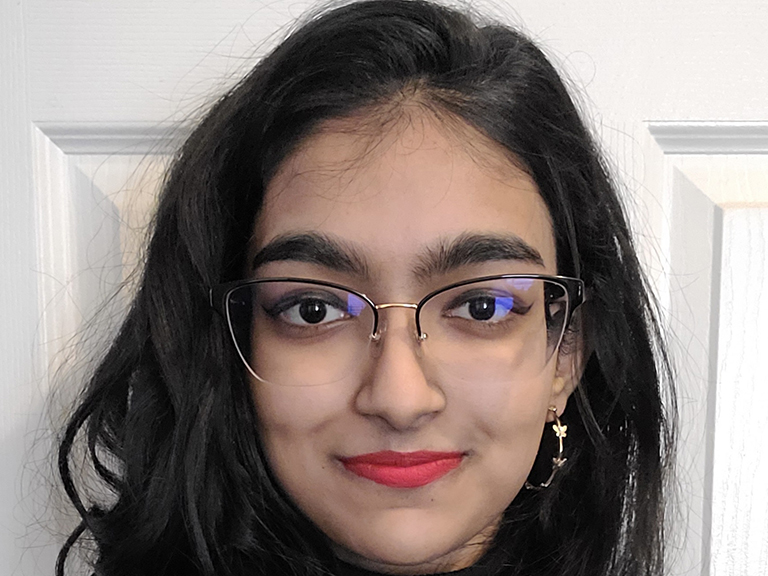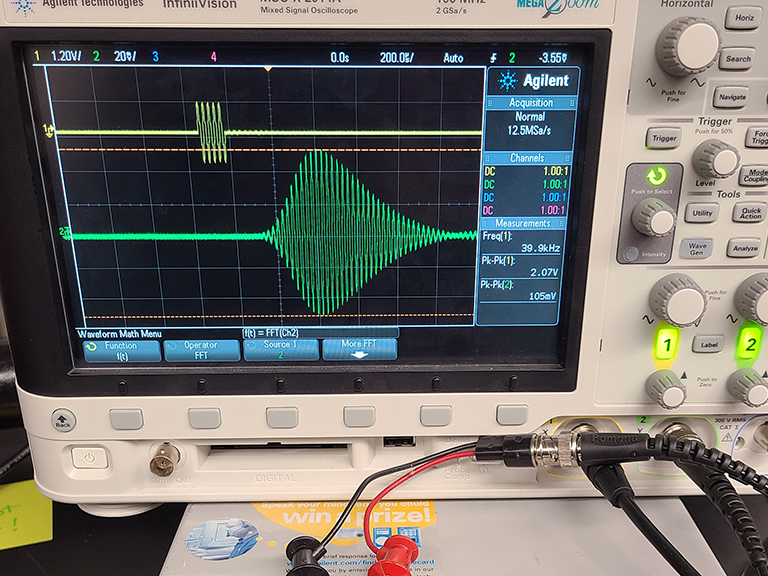Angelina Persaud ’25, a chemical engineering major, knew that she wanted to attend Manhattan College from the day she set foot on campus as a high school sophomore. The visit for Engineering Awareness Day as a St. Catharine Academy student convinced the Bronx native that the College offered her exactly the kind of education she was looking for. Now five years later, Persaud has established herself as an active member of the Manhattan community: she’s news editor of The Quadrangle student newspaper, and last summer completed a prestigious research internship with the Columbia University Climate Change and Health Solutions Cohort. 
At Columbia, Persaud worked in the Moment and Kymissis Labs, where she studied the applications of ultrasonic technology for drying processes in a way that increases energy efficiency. The internship allowed her to utilize engineering, science and mathematical concepts that she learned in Chemical Thermodynamics and Chemical Engineering Materials and apply them in a laboratory setting.
Ultrasonic drying is a method that uses high-frequency sound waves to accelerate the evaporation of water. It is faster and more energy-efficient than traditional drying methods, such as hot air drying, and the devices used are micro-scaled. It can be used to dry food, textiles such as clothes and towels and pharmaceuticals such as tablets, powders and capsules.
Persaud used an ultrasonic transducer to study how a super-absorbent polymer sphere (known colloquially as “orbeez”) and a small porous sponge dry. She also learned how to use new technologies and methods to analyze data: such as NIR spectroscopy, PCA/PLS statistical analysis, Arduino programming, COMSOL physics modeling software and 3D printing techniques.
“Everyday was different, which is what I liked about it,” said Persaud. “Every morning I would take my data and run it through an XL spreadsheet, make my graphs and analyze it on my own. When my supervisor arrived, I would show it to her and we would review and evaluate whether we would rerun this experiment or change the object that we were using.”
She admitted that one of the challenges of the project was that it combined aspects of electrical engineering with chemical engineering. She spent time reading textbooks and talking to colleagues to learn more about how the two fields connect in the lab. 
“What's particularly impressive about Angelina is that she is well-rounded,” said J. Patrick Abulencia, Ph.D., graduate director, chemical engineering and associate professor, chemical engineering, who has acted as a mentor for Persaud and encouraged her to apply for the Columbia internship. “Before matriculating at Manhattan, she engaged in robotics and tissue engineering, which are two disparate fields. Summer research opportunities such as the one Angelina participated in not only enriched her broad base of knowledge, but provided a level of depth to better help her identify whether it is something that she wishes to pursue as a professional.”
In a family with many male engineers, Persaud is proud to be the first woman in her family to be pursuing the field. She is considering entering the biopharmaceutical technology industry after graduation. Her advice for other students seeking out internships is to be open to new experiences, even if they seem extremely challenging or out of one’s comfort zone.
“Don’t be afraid to explore things on your own or research topics that someone can’t teach you directly,” she said. “When you are on the job, you need to be able to figure things out on your own and ask questions for clarification if you need help. This experience brought out a whole new side of me.”